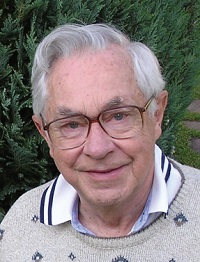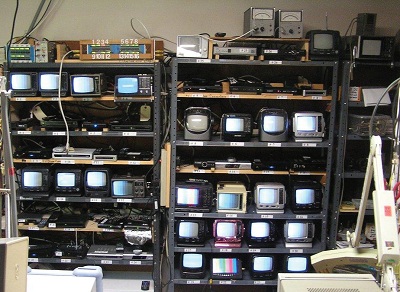FCC Auctions: More Potential For DTV Interference

Charles W. Rhodes
The Notice of Proposed Rule Making issued by the FCC on Sept. 28 provides a wealth of information as how the commission will go about repacking broadcast spectrum and auctioning some as yet undetermined portion of the UHF band.
From it, I learned that the present allocation of Ch. 37 (608–614 MHz) to radio astronomy might be changed to allow broadcasters to use Ch. 37, while radio astronomy would be given some other spectrum, possibly near Ch. 37.
This made me think about the double-conversion tuners in some of the NTIA-approved converter boxes. Some, if not all of these have a first IF of 1222 MHz. This is the second harmonic of the center frequency of Ch. 37—611 MHz. This cannot be a coincidence. Ch. 37 is the only TV channel that has never been used for broadcasting. Any strong signal on that channel could generate second-order distortion products (second harmonics) centered on 1222 MHz.
In my laboratory, I have some down-converters, which I believed use a doublec onversion tuner. So my colleague, Linley Gumm, and I generated an ATSC Ch. 37 signal on my Rohde & Schwarz DTV signal generator and fed this, along with a desired signal, to these down-converters.
All four converter boxes were jammed by a strong Ch. 37 signal. The interesting thing is that this happens when the unit is tuned to any TV channel from 2 to 51. It appears that the designers of double-conversion tuners really knew what they were doing in selecting this first IF frequency. There really are few alternatives to 1222 MHz for double-conversion DTV tuners; each has its good and its bad features.
So, what if the FCC allows broadcasters to use Ch. 37? Trouble appears likely for receiving devices with a first IF=1222 MHz, like all the double-conversion tuners in my lab.
The professional video industry's #1 source for news, trends and product and tech information. Sign up below.
But, this is a hypothetical question. Unless the FCC changes the rules, it simply won’t be a problem. Or will it?
Another second-order distortion product is the sum of the frequencies of two signals: F1+F2. Suppose that Ch. 37–X and 37+X (X is an integer) are allocated in the great repacking in the same market. For example, let X=2. We would have an undesired signal on Ch. 35 and another on Ch. 39. Their center frequencies are 599 and 623 MHz. The sum of these is 1222 MHz.
So we tried this experiment and found that, compared to a single UHF signal on Ch. 37, we had more interference from this symmetrical pair of channels. There were no double-conversion tuners used in analog TV receivers, so this problem was unknown until now.
There are many channel pairs that are symmetrical around Ch. 37. How many?
37 – 14 = 13 pairs. (Ch. 37 + Ch. 13 = Ch.50)
But would these far out pairs of UHF channels cause interference?
So we did another experiment with these four double-conversion tuners. We used Channels 17 and 57 (X=20). That required three frequency-agile ATSC signal generators. I used mine and we borrowed two more from Larry Sayer of Rohde & Schwarz. Another was obtained from Bernard Rate, senior engineer of GPA Associates, a local consulting firm.
The interference was slightly less with X=20 than X=2, but yes, any symmetrical pair of signals can cause interference, not just herringbone lines as was the case with analog TV, but complete reception failure!
So it really doesn’t matter much whether or not the FCC allows broadcasters to use Ch. 37. These symmetrical pairs of channels are the killers. And kill is what they can do to any DTV signal to which the viewer may have tuned in if it’s weak enough.
How weak, you must be thinking?

Bank of 26 TV monitors feed NTSC signals to 26 NTIA-approved converter boxes under test. In our experiments, we set the UHF signal(s) to –17 dBm per channel. We changed the desired signal power until the units under test locked to the desired signal and produced stable pictures with audio. Under these conditions the minimum usable ATSC signal was –46 dBm for X=2, and –53 dBm for X=20—quite a ways from its noise-limited value of –85 dBm.
We also found that Dmin varies linearily with the U power. If we increased the power per channel by 10 dB, Dmin followed.
Alas, what can be done about this newly discovered interference mechanism?
The FCC could set up a program for owners of NTIA-approved converter boxes that fail after the spectrum repacking is accomplished. The NTIA issued about 33 million coupons with which people could buy an NTIA-approved converter box for $40, a real bargain. As a guess, there are probably 30 million converters in use. Of these, perhaps 15 percent have a double-conversion tuner, so the number of replacement boxes needed is approximately 5 million.
However, in many communities there may be only a few of these symmetrical channel pairs in operation. Also, some of the converter boxes have by now been replaced by new DTV receivers. In any event, this problem can be solved by the government throwing money at it, and I think that they must. After all, the NTIA approved these converter boxes for its $40 coupon program.
While I haven’t seen any of these in stores for several years, a government program would create a market for possibly 4 million boxes. Single-conversion converters from the NTIA-approved list would reenter the marketplace. The FCC knows which converter boxes have a double-conversion tuner. So, no problem!
Charles Rhodes is a consultant in the field of television broadcast technologies and planning. He can be reached via email atcwr@bootit.com.
